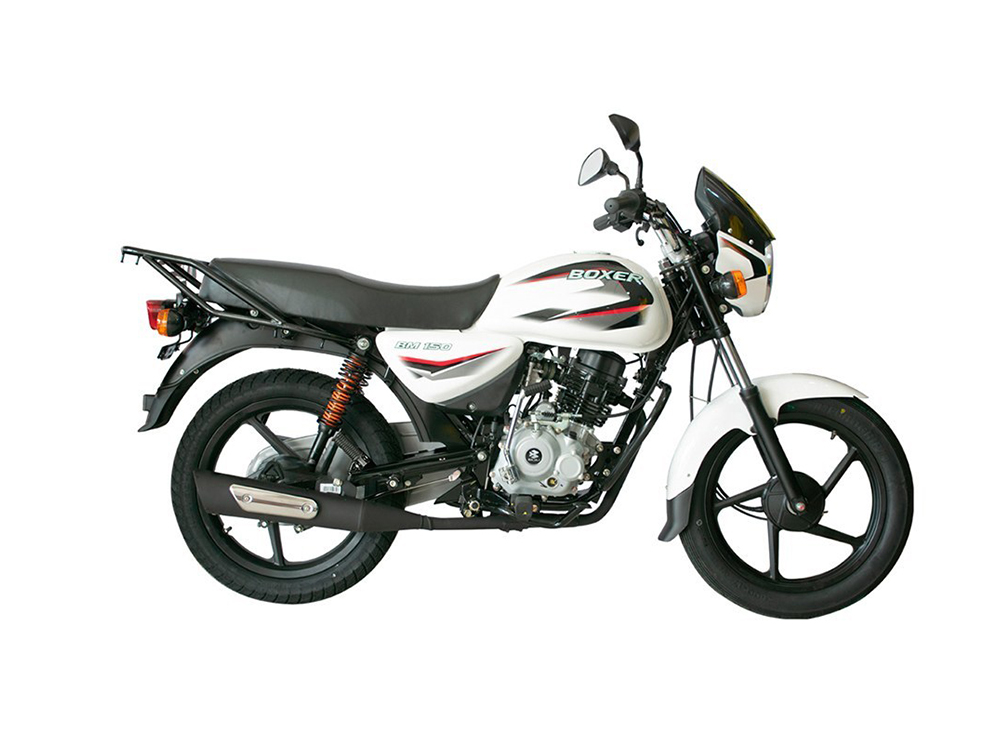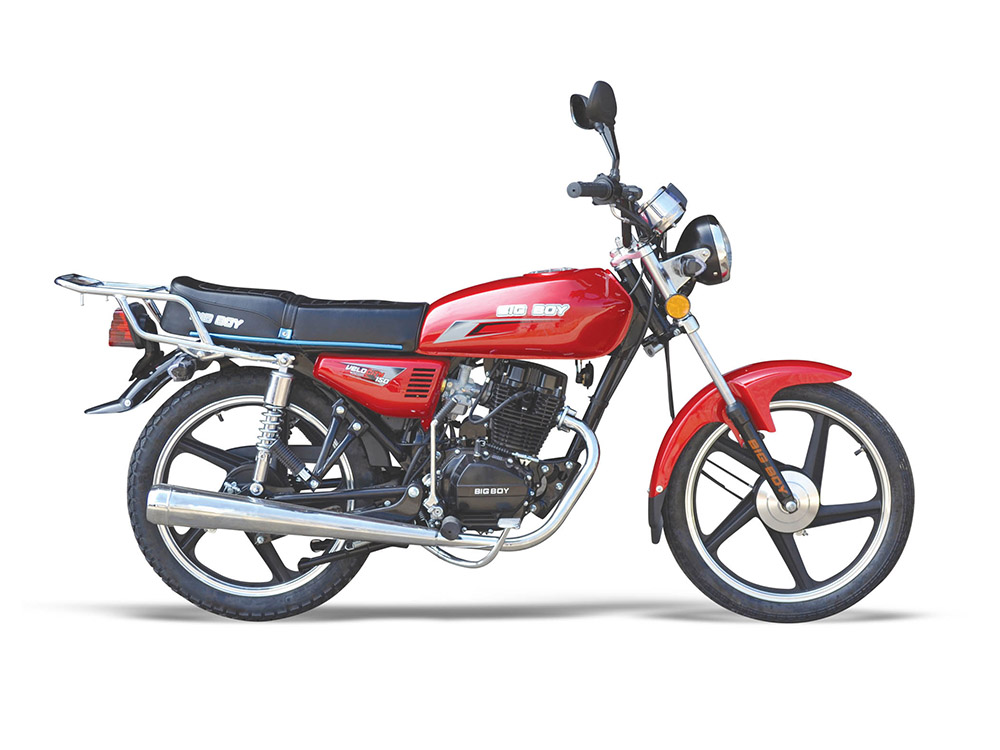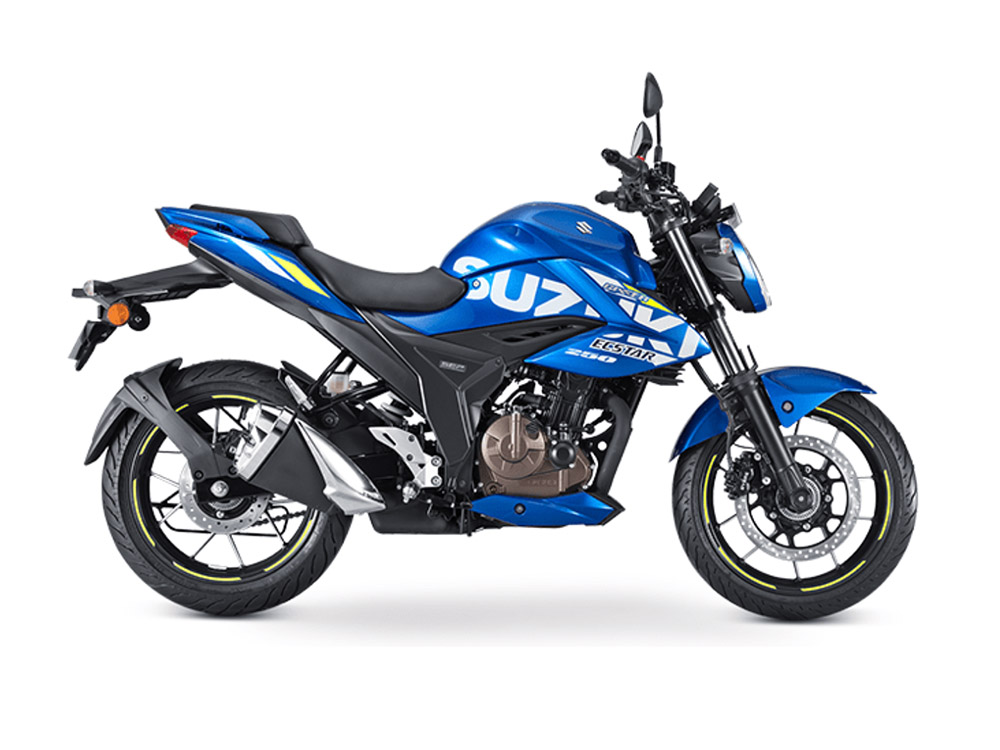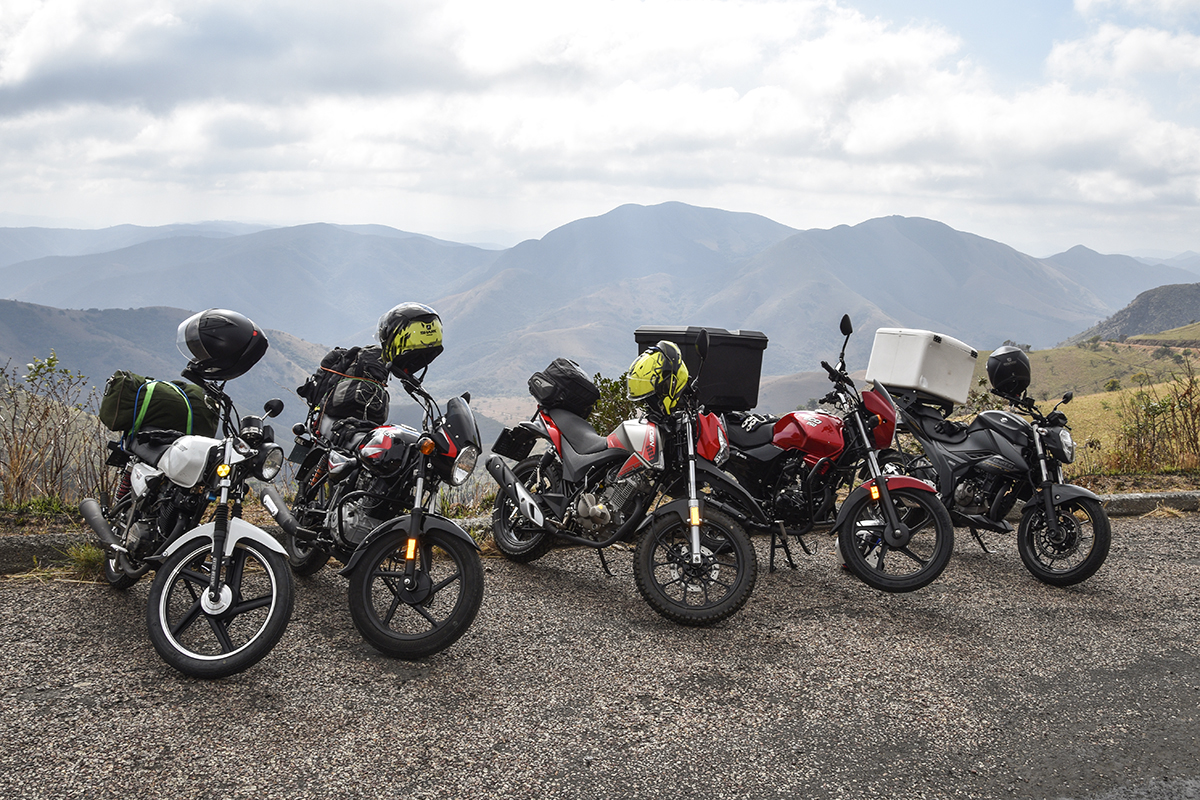
There was a moment, in what must have been our 100th off-road kilometre (or maybe it was only the fifth!), when I couldn’t stop laughing hysterically, simply because it was all so ridiculous. Here we were, tackling off-road routes that a lot of people would hesitate to attempt on their full-blown adventure bikes, on five bikes that are normally seen dodging through traffic in every main city and town in South Africa delivering takeaways or your shopping. We were subjecting these bikes to treatment way beyond what their manufacturers envisaged and not only were they handling it perfectly, but we were also having the best fun.
It’s funny how perceptions change. Thirty or forty years ago, a small-displacement motorcycle would have been the stuff of dreams for any red-blooded school kid and the bike sheds at every school were crammed with dozens of them every day of the week.
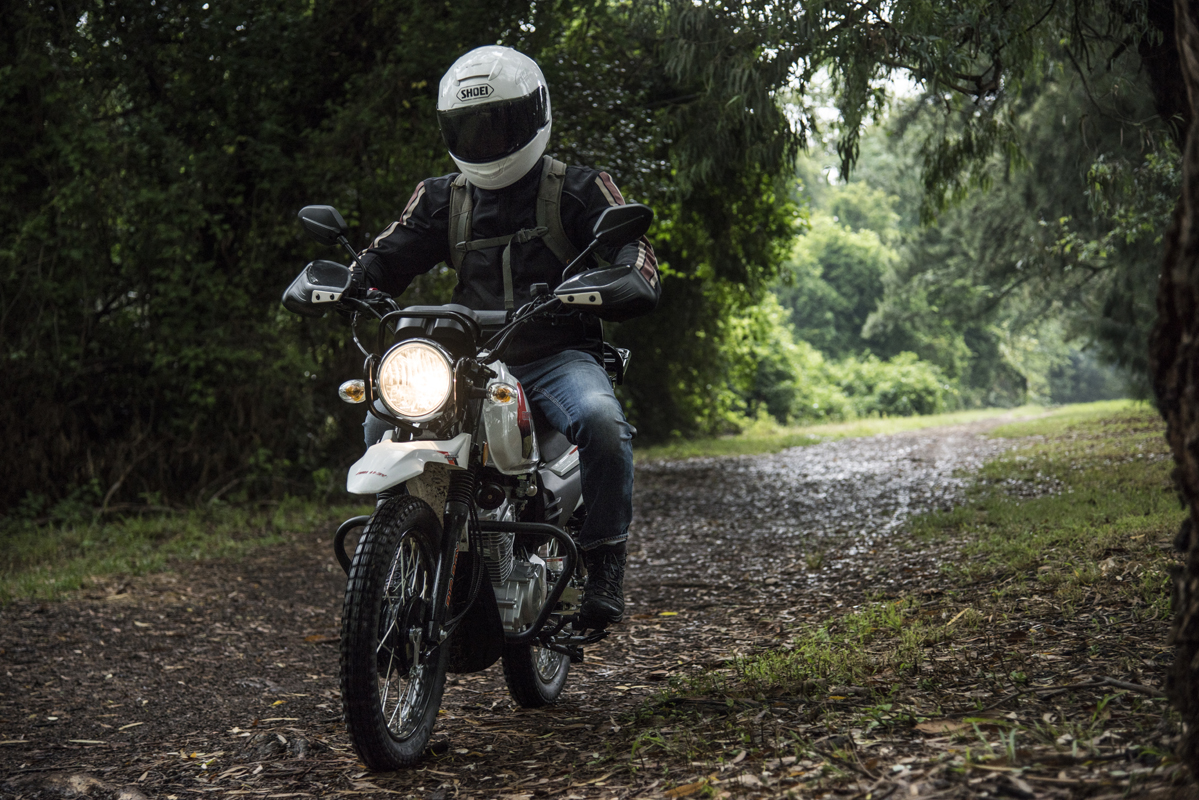
Fast forward to today and the only small-displacement motorcycles you see on the road are derisively classed as ‘delivery bikes’ and no self-respecting kid or grown-up motorcyclist would be seen dead on one. And this bothers me. Why are we so tolerant of other motorcycles but not these humble workhorses? Is there any way we might all be wrong and there is more to the Big Boys, Heros, Kidens and Bajajs than meets the eye?
Thus was born one of those brilliant (dumb?) ideas which have been known to pass through my mind at irregular intervals. The last one was to ride six twist-and-go scooters to Mozambique and back, really putting them through their paces. This time, we would conduct a thorough test of ‘delivery bikes’ by riding them from Johannesburg to Swaziland and back.
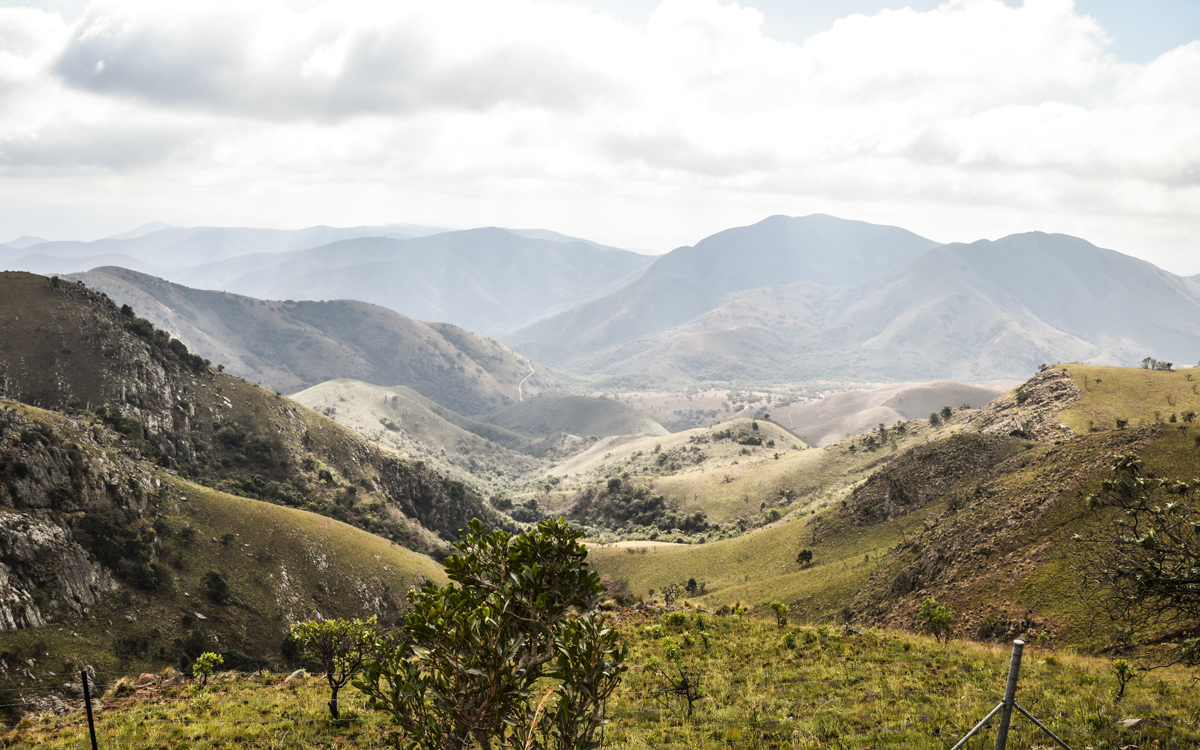
The idea was to prove once and for all that these bikes should be considered ‘real’ or ‘proper’ motorcycles capable of tackling more than the potholed roads of a city, and that a journey undertaken on them, preferably in company with equally mad friends, is not only possible but can also be fulfilling and a lot of fun to boot.
There was no intention of empirically proving which one was better or worse than the rest; that would be impossible. They all made it there and back, with no breakdowns or anything falling off and neither was one sorely lacking in performance when compared to the others. Even personal preference had to be ignored; as we found out, one rider’s favourite was another’s worst. No, this was merely to prove that you don’t need to spend hundreds of thousands to have a reasonable expectation of getting to your destination and home again, and nor does spending less impact the amount of fun you can have.
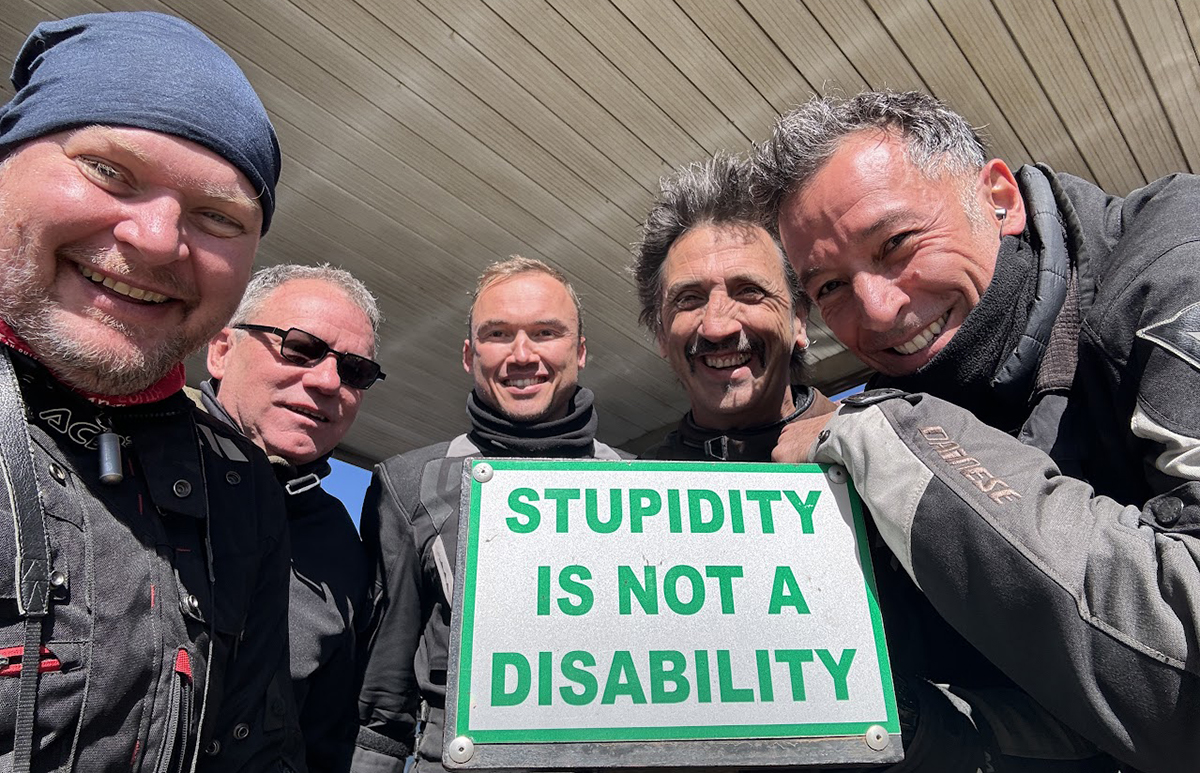
So, without further ado and in no particular order, these were the bikes chosen;
Big Boy Velocity 150
Perhaps the most populous model on the roads in the hands of delivery riders and also the least-expensive on this test, as well as being physically the smallest. To be honest, it looks and feels the cheapest but the performance matched the others km/h for km/h and it completed the 1,100km without a problem.
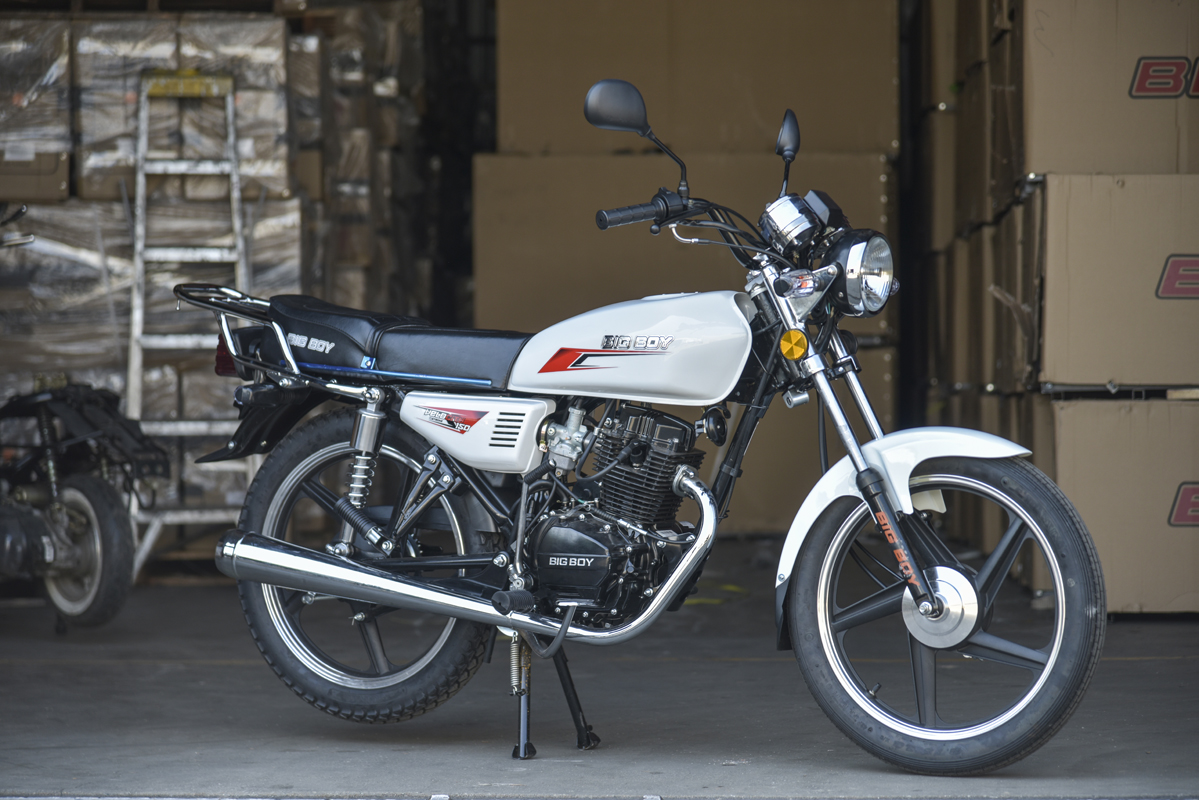
Bajaj Boxer BM150
Being one of India’s biggest automotive and motorcycle manufacturers, you’d expect Bajaj to have a good handle on making a motorcycle that was cost-effective and reliable and so it proved. The Bajaj Boxer had few frills but also gave the impression that it was all the better for it. A neat touch (shared with the Hero) was the fully-enclosed chain which was certainly a bonus on the dusty trails we found ourselves on. Unique in having a completely upside-down gearbox, with neutral at the top and then clicking down through the five gears.
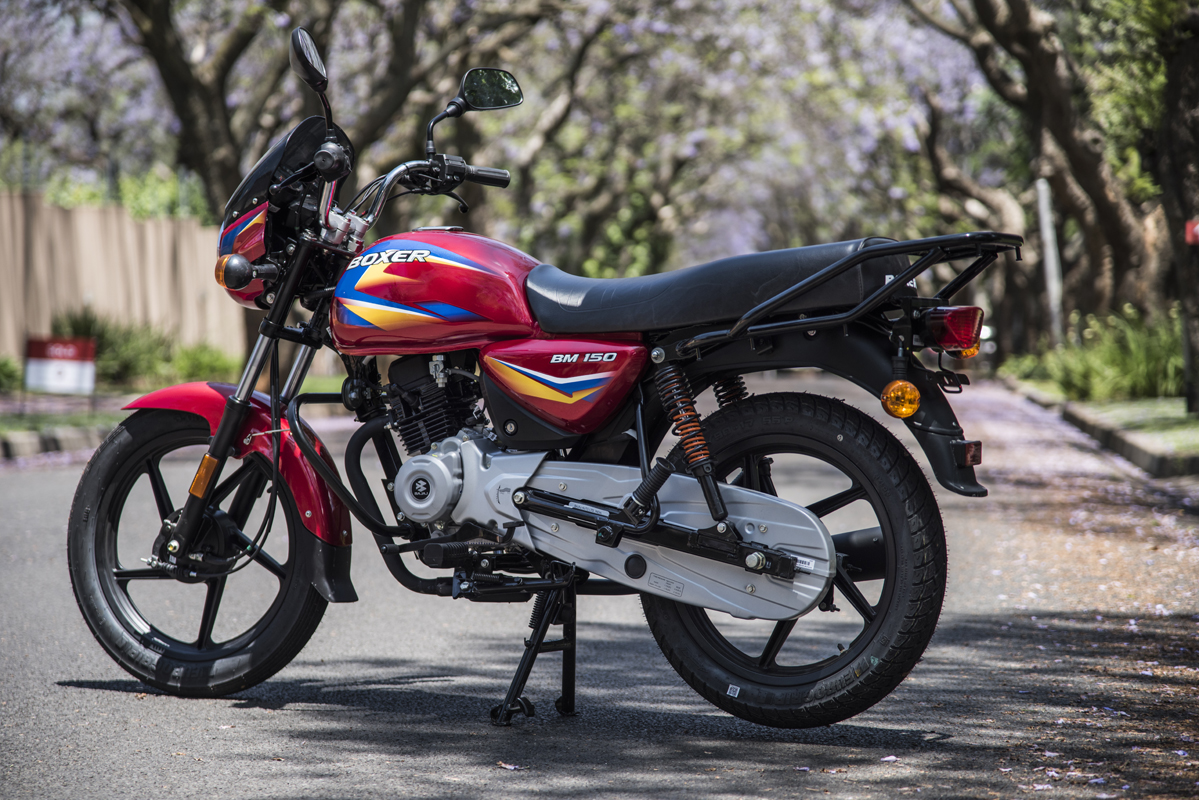
Hero Eco 150
Possibly the most grown-up and accomplished model in this group (bar the Suzuki, see below), the Hero impressed due to the high quality of the overall fit and finish, while the engine was supremely smooth and very quiet – it was barely audible at tick over. It is difficult to think of any significant improvement that could be made. One of two bikes fitted with a top box, which was huge, sturdy and lockable.
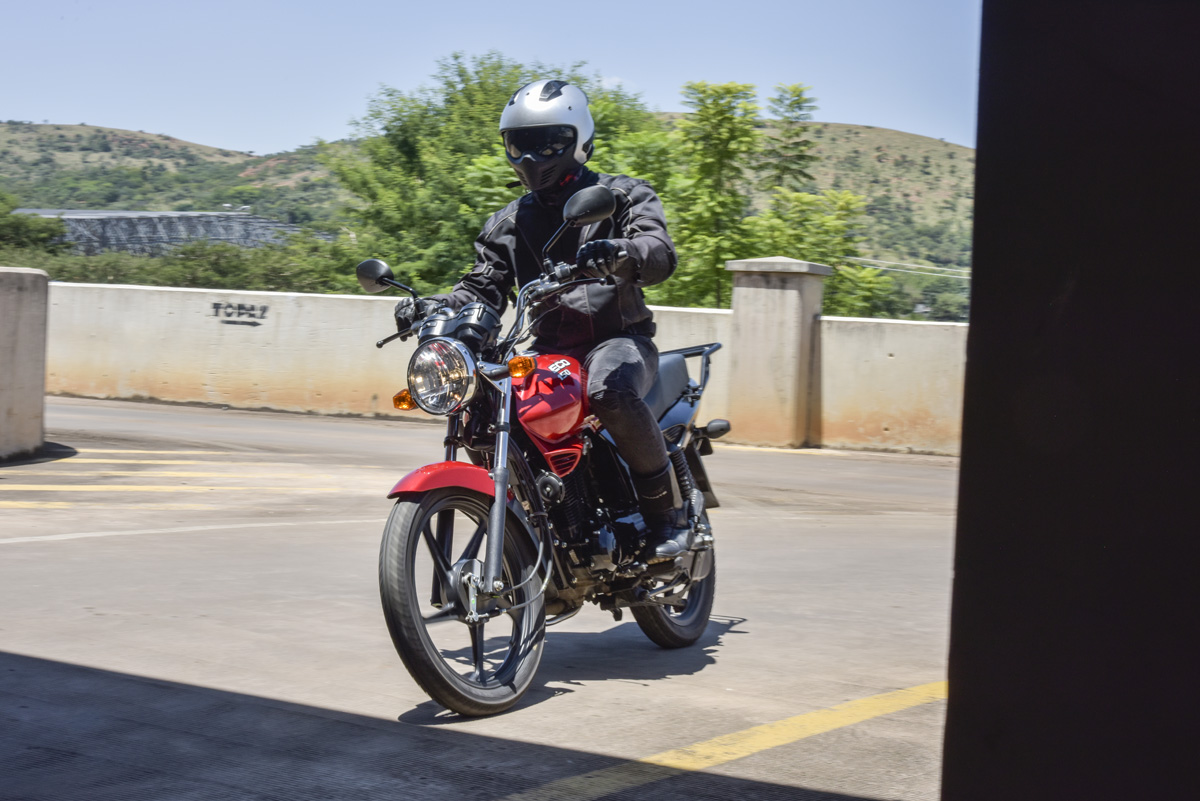
Kiden KD125-J
The most modern in terms of design language of the four ‘cheapies’. The smallest engine here but it gave very little away in terms of performance over the 150s. The stepped seat does force the rider forward more than they might like for long journeys but there were no complaints about any other aspect of the bike.
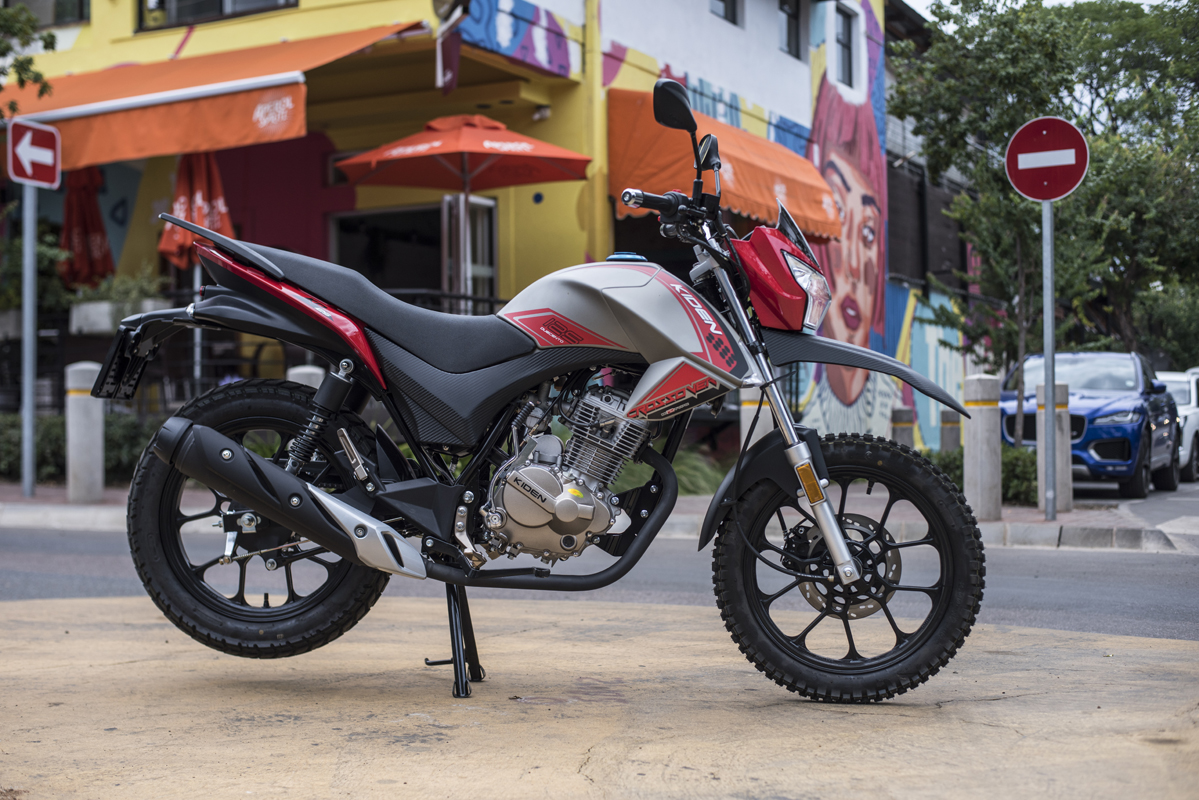
Suzuki Gixxer 250
To be fair, the Suzuki was in a different class to the other bikes on this test; the Gixxer 150 would have been more appropriate, as well as coming in at a more equal R37,640, but one wasn’t available so the 250 it was. Leagues ahead of the competition not only in terms of its performance, which is impressive, but also in terms of its build-quality and appearance, which follows modern lines. It felt solid and Suzuki knows how to build reliability and style into its products.
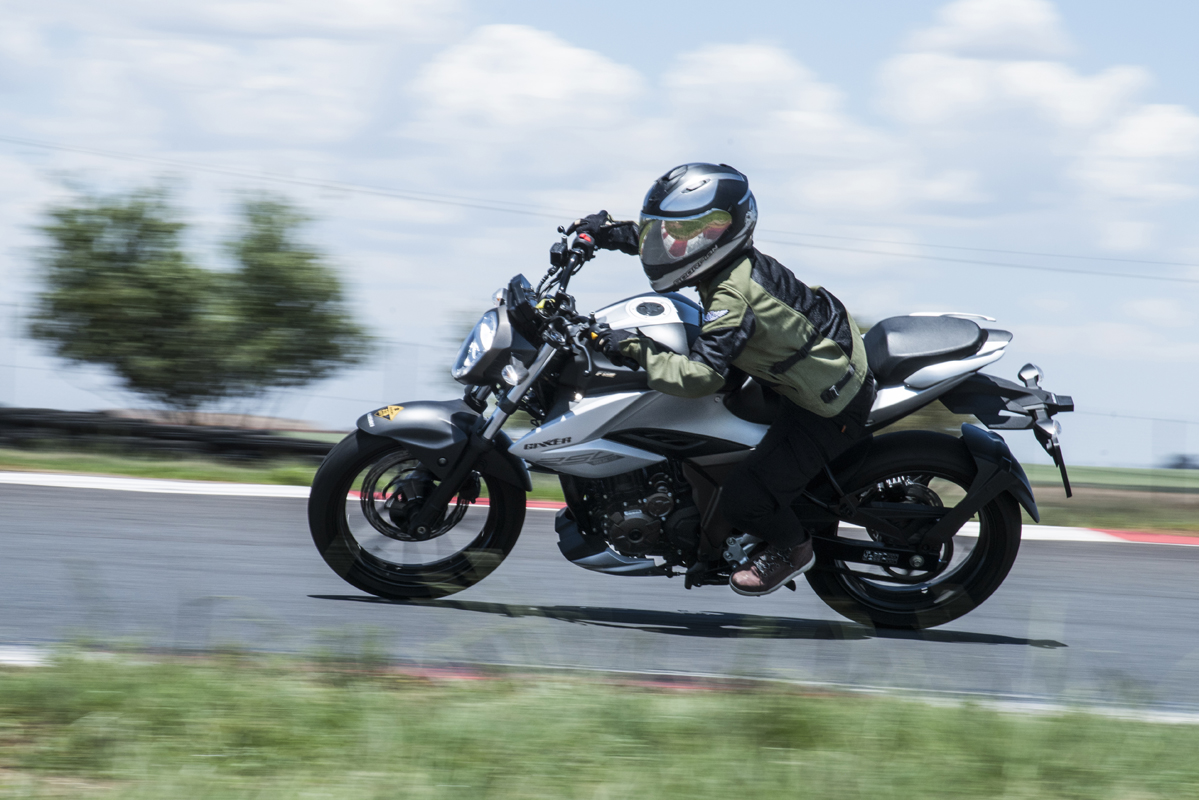
What also has to be mentioned is the miserly fuel economy of all the bikes. Between 40 and 50mpg (22ish km/L) was always the consumption, no matter the riding conditions and this, with an average of 11-litre fuel tanks, gives an extremely useful 400-500km range. All bar the Suzuki had fuel taps with reserve position so there really is no excuse for running out. Even carrying a spare litre in a bottle would likely get you to civilisation in an emergency.
I’ll make no bones about it: this was a trip planned with close friends in attendance, the journey being the experience, not simply the destination, as much as it was with a point to prove about the bikes. There was, however, one simple element of the journey – and the bikes themselves – that was essential to our overall enjoyment and this was that our top speed was determined by the bikes themselves and not our personal skill levels.
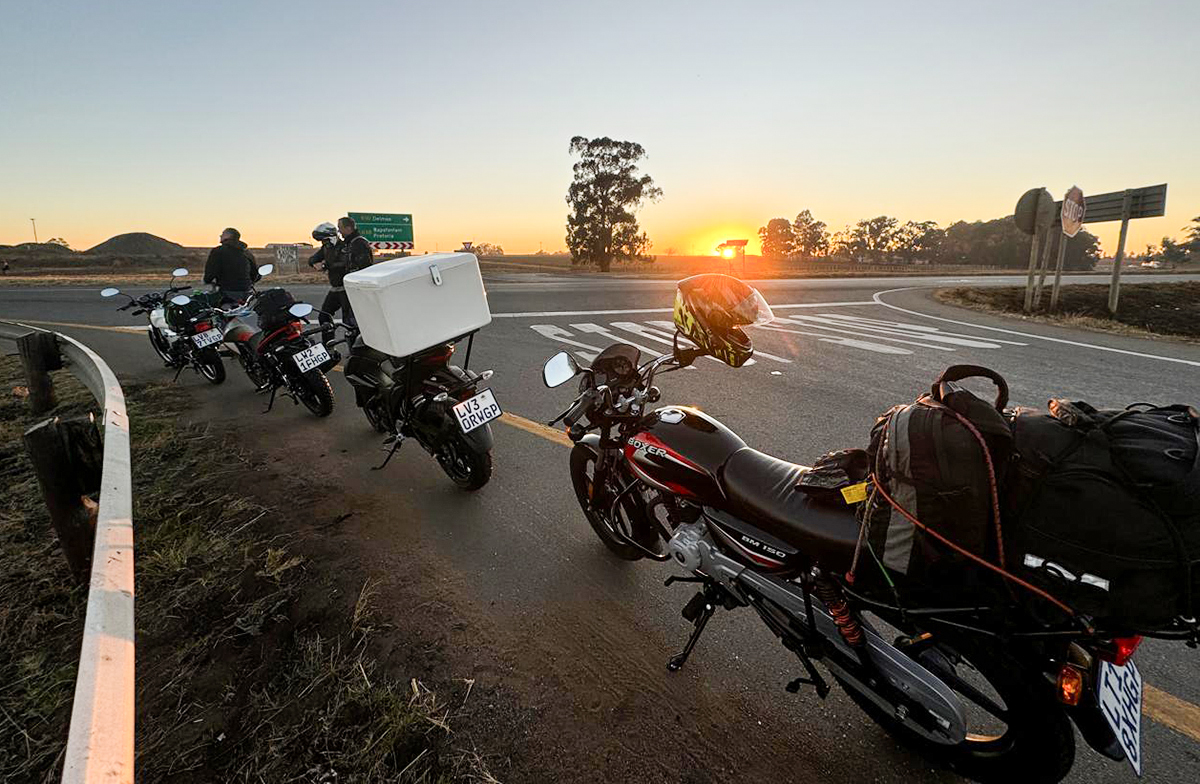
Had we been on 1,000cc bikes, it would have been inevitable that some of us would have raced ahead, leaving others straggling. As it was, we experienced everything together and that was hugely important to our enjoyment of the journey. Cruising at 80-90km/h gave us time to enjoy the scenery we were riding through, to tackle all the difficult bits together and to arrive at each waypoint en masse, having experienced it at the same time.
Johannesburg was left behind at 6 a.m. on Thursday morning, the mind-mumblingly boring (and freezing cold before the sun came up) highway miles to the turn off the N14 to Carolina dispatched easily, as is every kilometre at the beginning of an adventure. The bikes soaked it all up without protest, as they did the many more kilometres towards Barberton, our chosen gateway into Swaziland (I can’t somehow bring myself to call it Eswatini!).
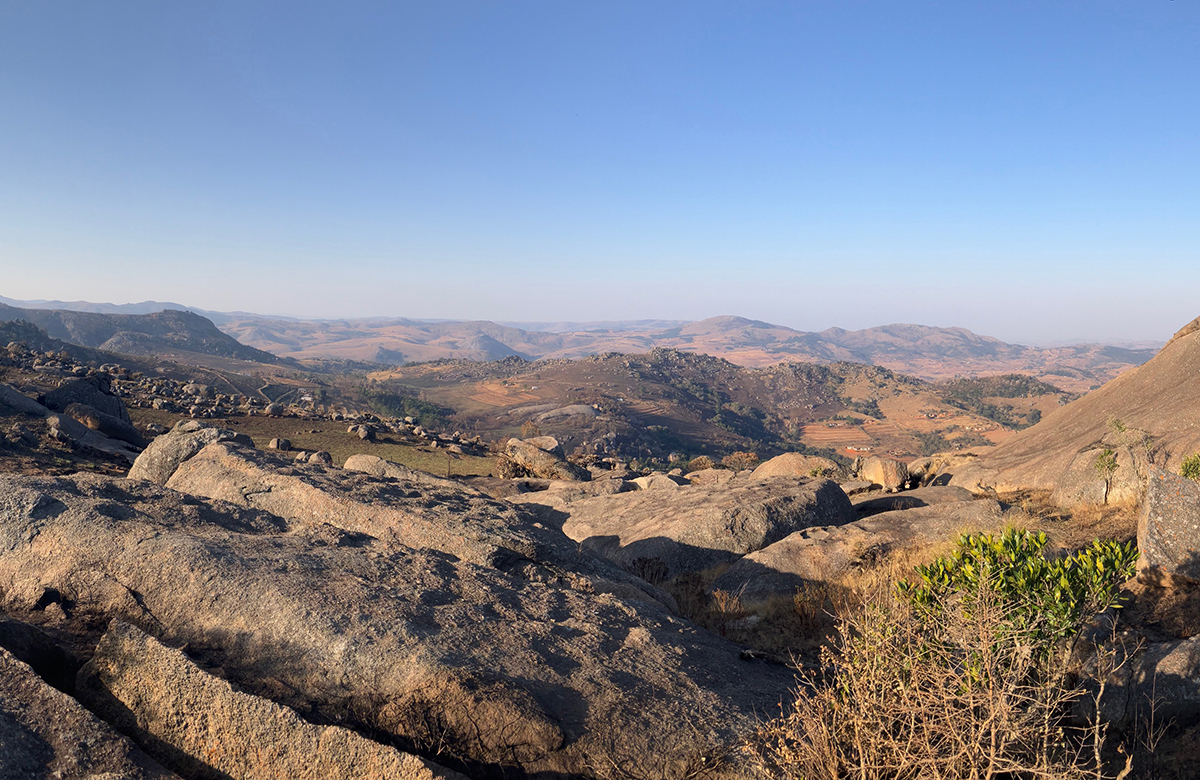
The plan had been to have lunch in Barberton and then cross into Swaziland to spend the night at Piggs Peak. Fate had other ideas. The R40 from Barberton climbs spectacularly into the mountains, twisting this way and that, with a new breathtaking view around every corner. Yes, the bikes lacked the urge to climb at any speed worth mentioning, but again, that didn’t matter.
What did matter were the semi-repaired potholes, one of which caught out the rider of the Big Boy; hitting a particularly sharp edge, both wheels cracked, letting out all the air quickly, resulting in rider and bike saying hello to the tarmac, fortunately without lasting damage to the rider. The Big Boy may have suffered twin cracked rims but the rest of the bike escaped remarkably unscathed.
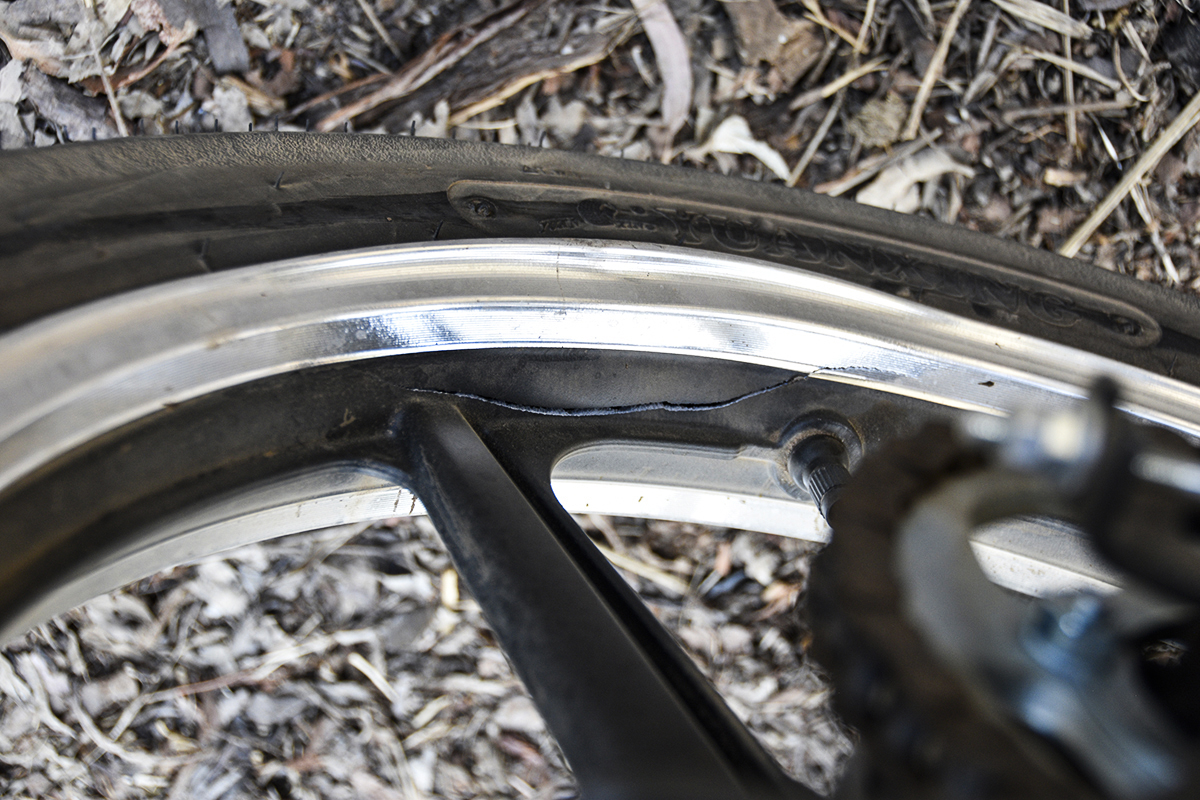
After a lot of faffing around – inevitably, we had come to a premature halt in an area with little phone signal – we found ourselves back in Barberton for the night. Fountain Baths Guest Cottages (073 682 9380) provided rustic but comfortable accommodation at short notice and our host even mended the accident-damaged jeans, saving the rider’s blushes and saving us having to look at his bare arse for the rest of the weekend (I mean, who travels with only one pair of jeans, for both riding and evenings?)
The next morning, CM Motorcycles, the Big Boy dealer in Nelspruit (082 905 1833) went above and beyond and took two wheels off a Velocity 150 they had in stock and exchanged them for our damaged items in short order, so that we were back on the road by 10:30. We can’t thank them enough as they saved the whole trip.
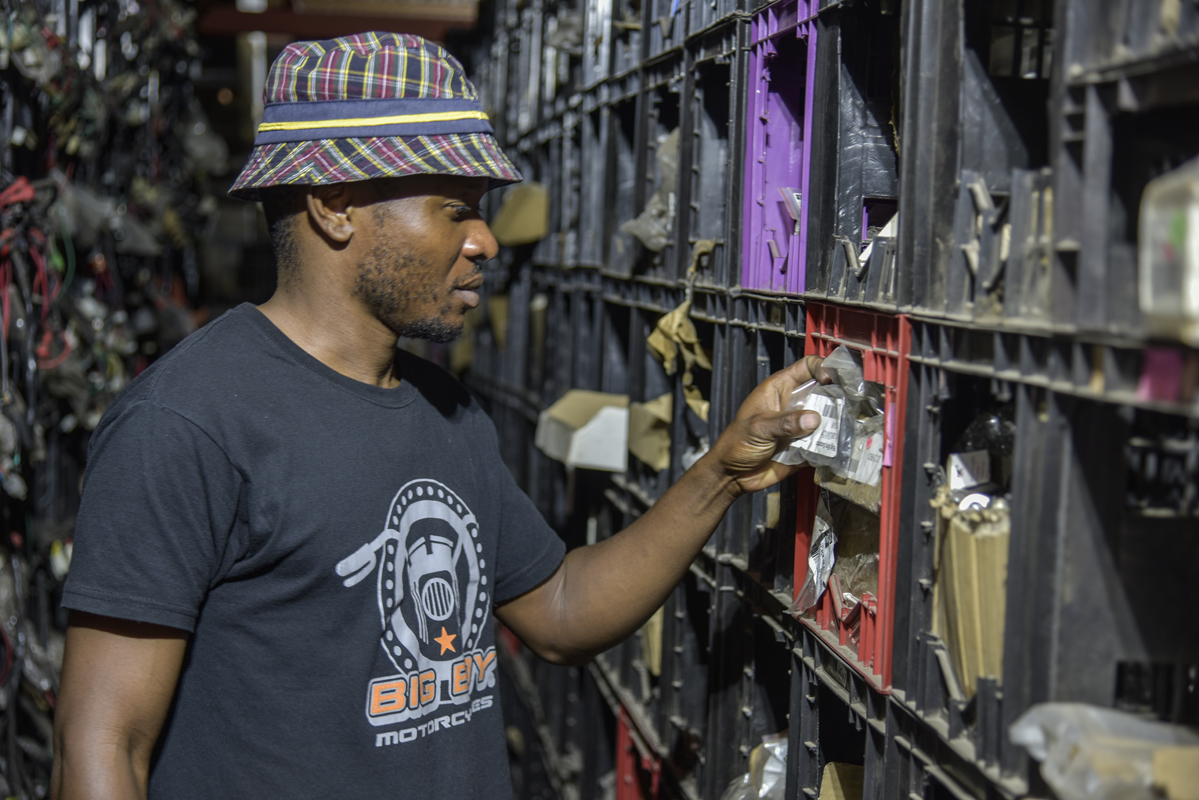
This time Bulembu border post was reached without incident and we were through in no time at all, all the personnel on both the SA and Swaziland sides being exceedingly friendly and efficient, if a little bewildered at what exactly we were doing on such bikes. That was a theme along the whole route, with people not quite getting what we were doing, or why! Maybe the smiles on our faces went some way to explaining it?
Immediately through the border and the riding changed dramatically. Almost straight away, we were onto a dirt road, dropping down and rising up dramatically. That would have been no problem, but what made it ‘interesting’ was the surface on which we were riding, seemingly always on the steepest down- and uphills! It wasn’t sand; it was infinitely worse than that; there was zero grip and the surface moved like water; I think those in the know call it ‘fesh-fesh’. Whatever it’s called, it made life….interesting, should we say.
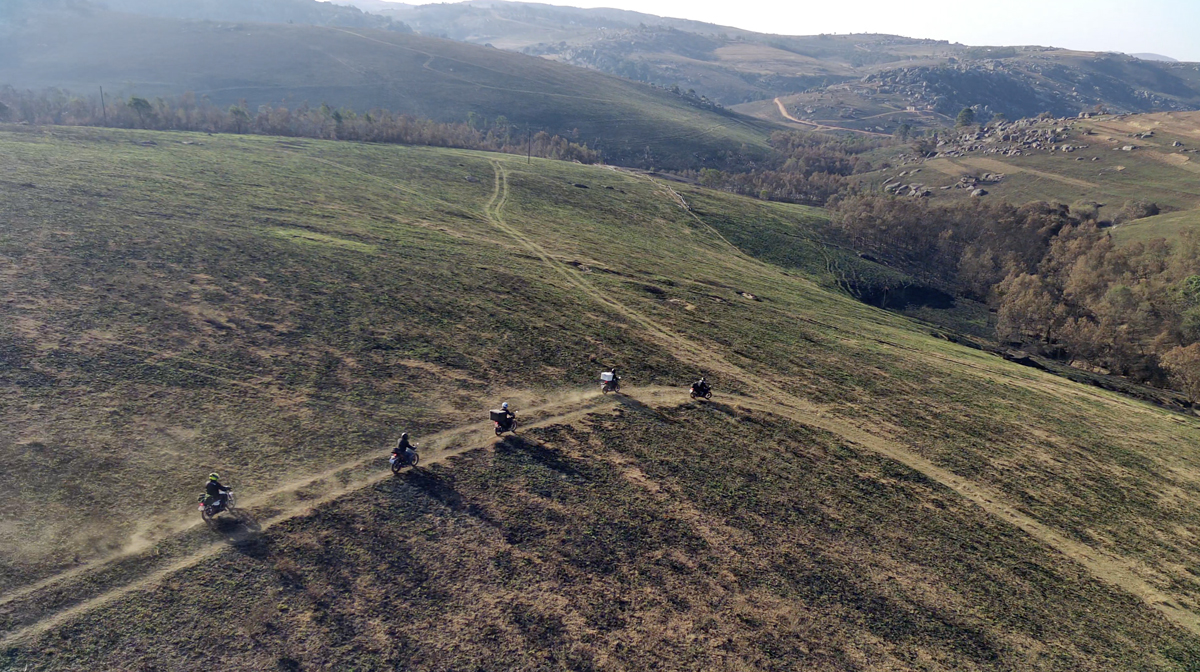
On a BMW GS or KTM Super Adventure, or any other 200kg-plus adventure bike, it would have been terrifying. On a delivery bike, it was merely nerve-shredding but also completely hilarious as we all slithered around barely in control but somehow remaining upright and pointing forwards. Well, most of the time…!
From that point onwards, we were rarely on tar – or so it seems in hindsight – as we wound ever deeper into this amazing country. We may have been only a few kilometres from SA, but it immediately felt different. Those who have visited this country will understand.
From Piggs Peak village, we headed south to Maguga Dam, pausing there for a much-needed beer overlooking the dam wall. The beer was the local Sibebe lager, which was appropriate as, from there, we were due to hook up with friends of one of our party, who have started a campsite at the top of Sibebe Rock, the second largest granite monolith in the world.
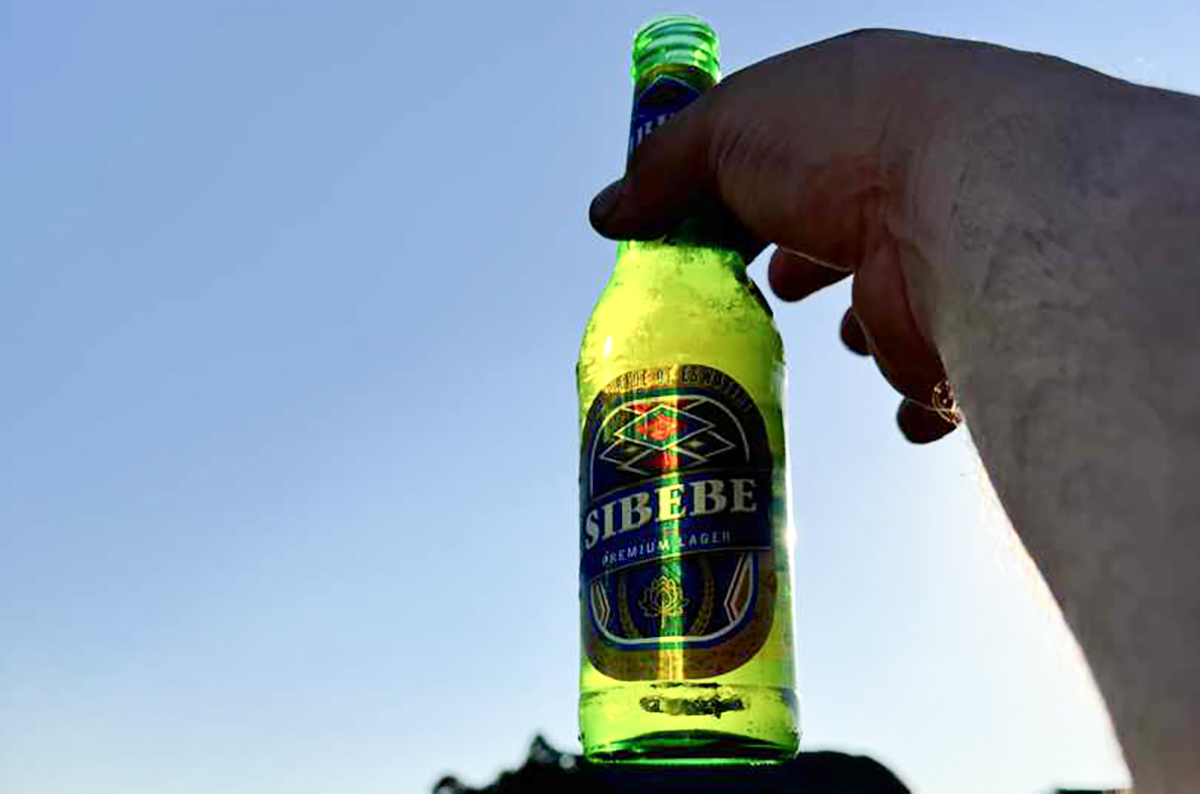
A lot more off-roading took us to our meeting point, from where we continued to climb up to the very top of the rock to Off-Track Eswatini, our destination.
The riding was spectacular, as were the views from the top; ‘breathtaking’ hardly captures it, as the vastly inadequate photographs attempt to show. I can imagine that it would be rather intimidating in bad weather but, in the sunshine that accompanied us, it was pure magic made all the more memorable by the ride up there.
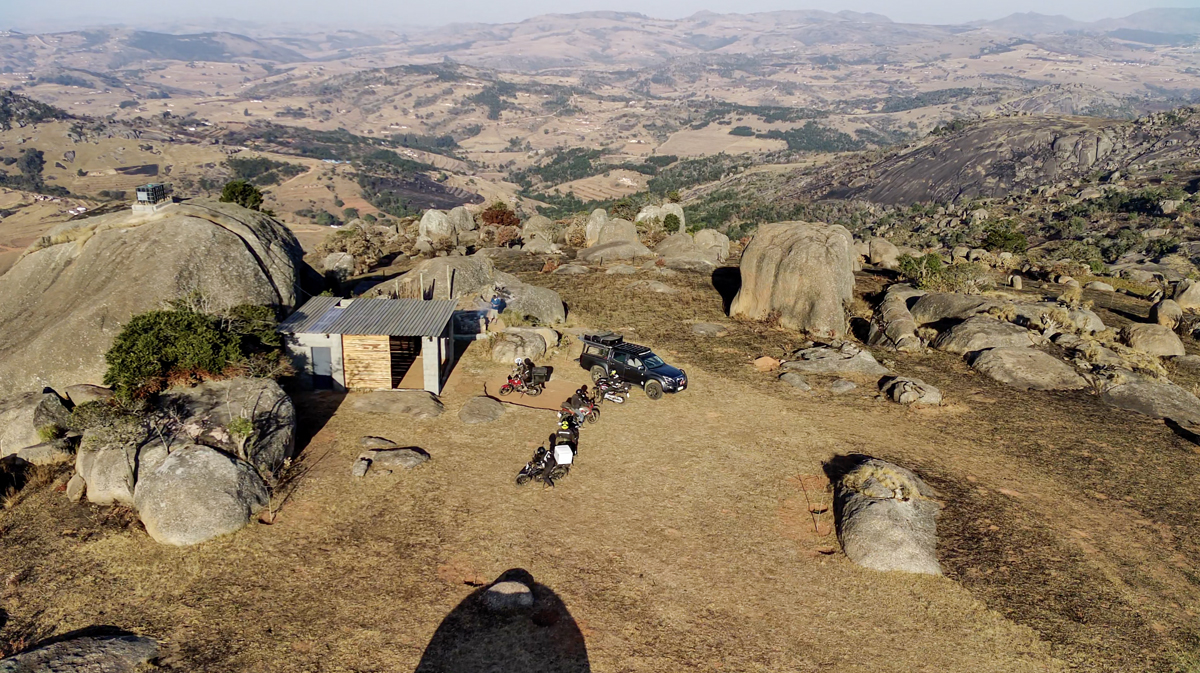
Lest it might be thought that inviting bikes and 4x4s up there is to cause damage to the countryside, our guides were keen to point out to us that they are focussing on protecting the local flora and fauna and the camp shares an open boundary with the Sibebe Reserve. The 850 hectares of prime mountain range boasts indigenous forests and incredible veldt, perfect for riding and hiking.
The owners of the camp offer adventure riders full days exploring Swaziland, with warmth, food and hot showers when you return to camp, to sleep either in your own tent or in a rented tent. For more information, contact [email protected] or call them on +26 87 681 9191. You can also find them on Facebook and Instagram.
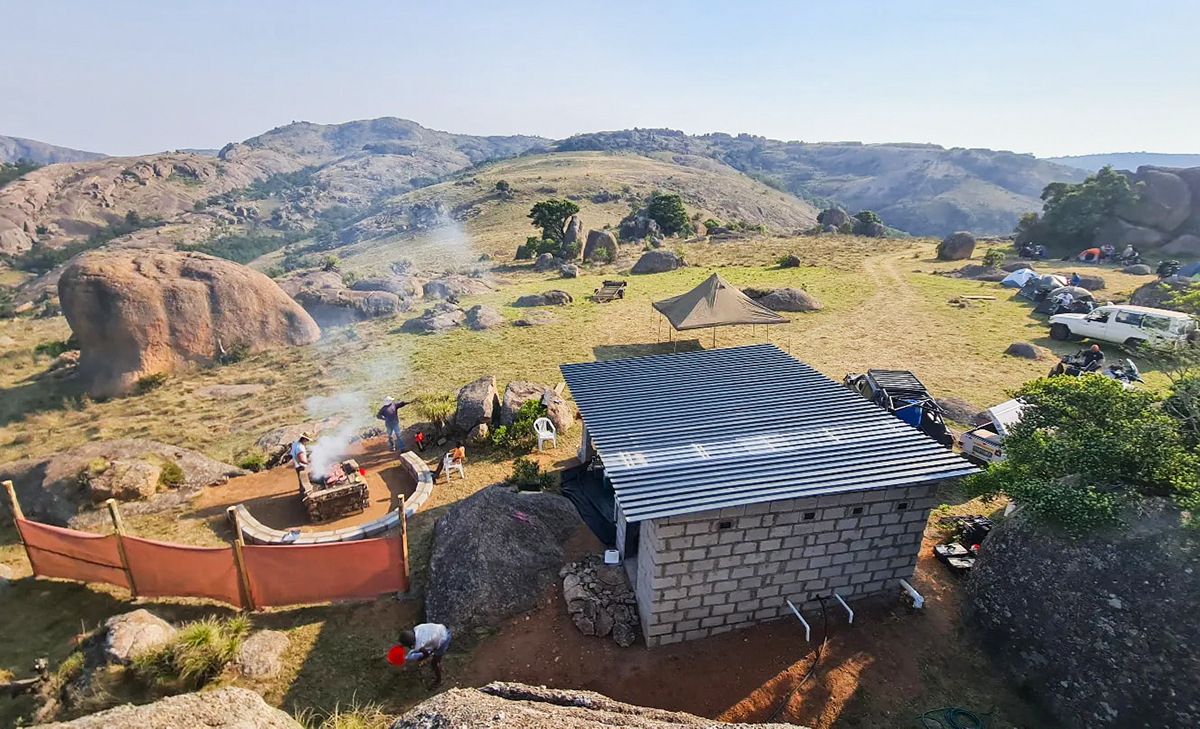
The rock might be only 10km from Mbabane, but our route down the mountain was just as spectacular as that going up and it took us a good hour to reach our overnight destination at Malandlelas Lifestyle Centre (+26 87 822 4489) and dinner at House On Fire. Never has a brandy and coke tasted so good!
Next morning, we rode for an hour to our next overnight stop at Bushbaby Lodge (+26 87 802 4736), set in the Nkonyeni Golf Estate. After the exertions of day one and two, it was good to have a day of relative rest and perform some maintenance on the bikes. Nothing had come loose and nothing had broken, chains needed adjusting and lubing, as did some of the drum brakes but that was it.
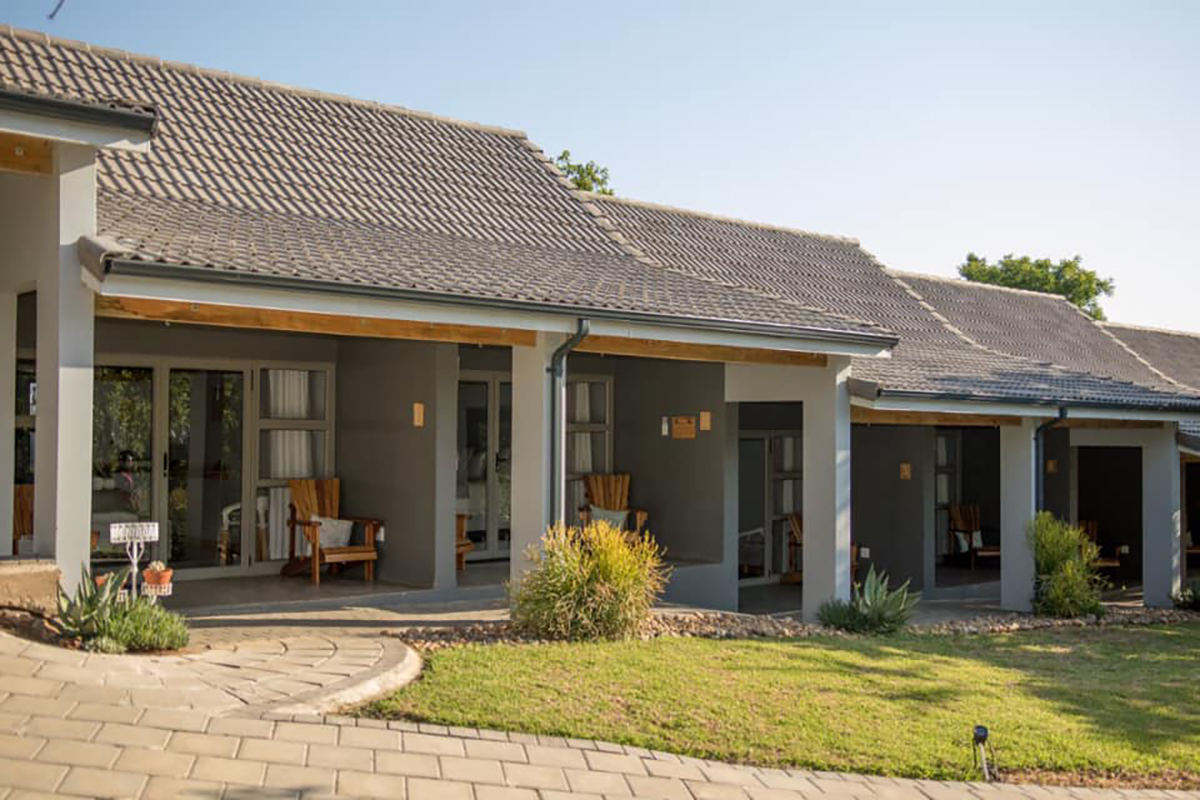
Later that afternoon, we went to Rider’s Ranch, home of the Swazi Rally, to watch and take part in some wonderfully eclectic local drag racing. Quite what the locals made of five grown-up men drag racing delivery bikes was not recorded but it was fun, all the same.
Sunday and the long trek home, via the Nerston border post; again, well kept, friendly and efficient, not to mention very quiet, so that we were in and out in minutes. As is always the case, the ride homeward through Ermelo, past Secunda and into Johannesburg South was pretty unbearable for the riders, but the bikes made no protest at being ridden with the throttle on the stop for hour after hour.
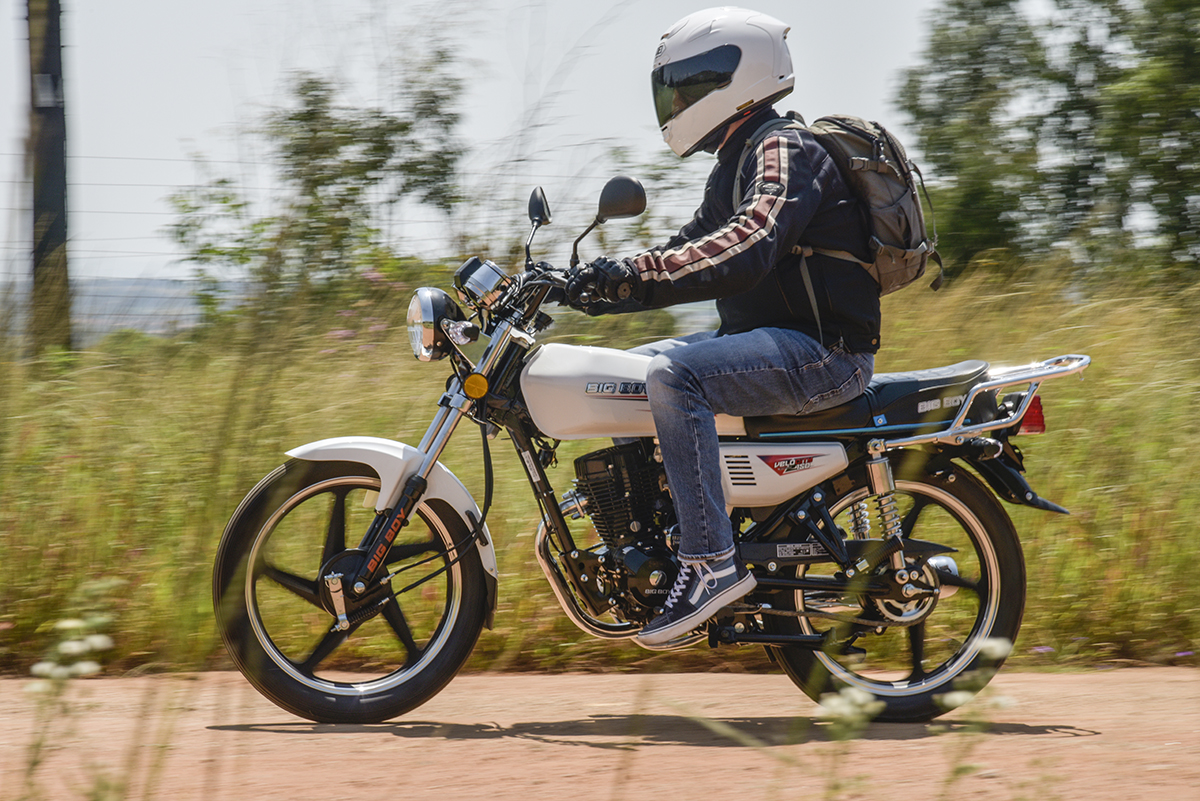
And that was the whole point of this extended test. These motorcycles may be inexpensive to buy, but there is no denying the stamina of all of them. If you can overcome the (misplaced) stigma of riding one of these every day, you will have a reliable and ridiculously cheap-to-run workhorse that will easily last you a good few years, if looked after. Even if they only last a couple of years, which is a very conservative estimate, spending between R17,000 and R25,000 for simple and efficient transport makes so much sense; you’d lose that much riding a brand new R200,000 bike out of the showroom! Factor in incredibly cheap servicing and spares and it’s hard to find an argument against them.
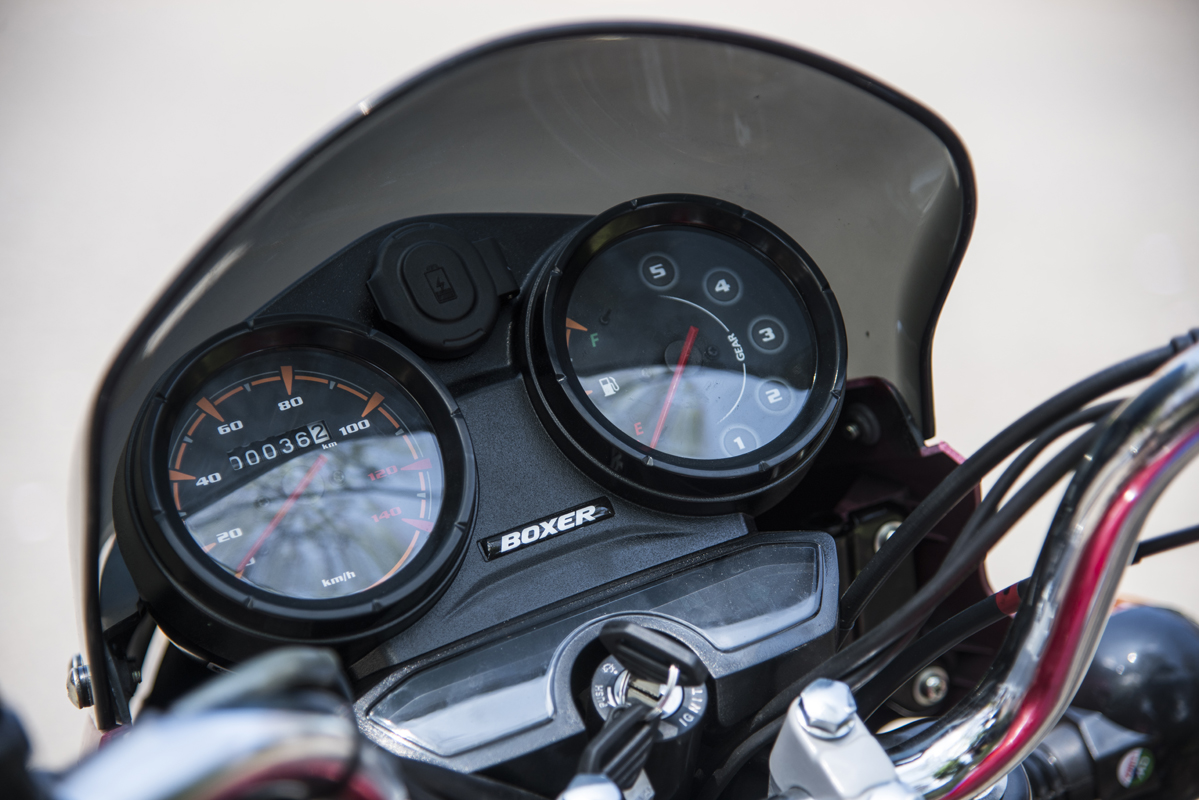
The other thing to remember is that they all have so much character; they’ll work their butts off without complaint and bring a smile to your face. Even should you choose to abuse them, they’ll still give good service. They’re perfect beginner’s bikes and, as we proved, make light work of any terrain you’d care to tackle. Yes, your 1,000cc+ adventure bike will be much faster and more comfortable over long distances but how often do you do those kinds of distances? Using one in the city for short journeys, where the engine will barely get warm, will wear it out much quicker, so why not let little faithful take that strain?
As for which one was the best well, as I said at the beginning, this wasn’t a test to decide the best; the idea was to prove that they are much more than merely workhorses with no redeeming qualities. I think we managed that.
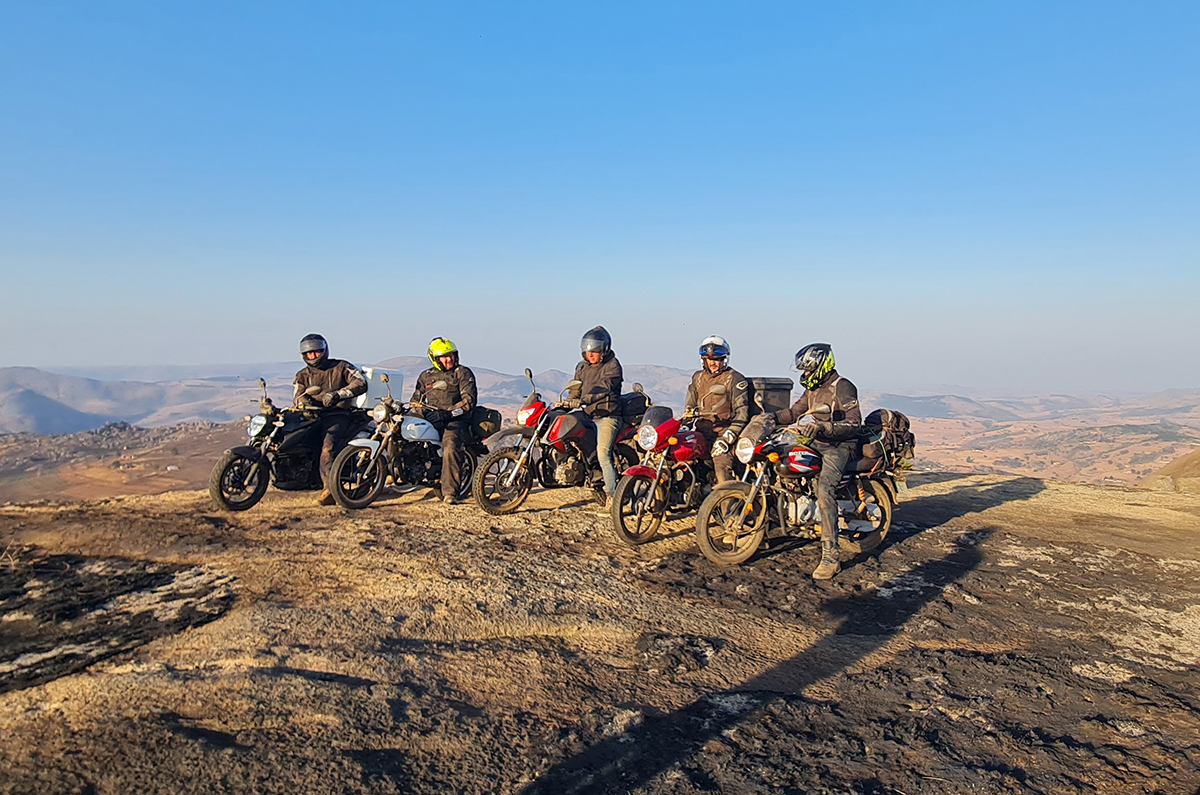
Personally, I really liked the Hero but others found the seat too soft and the riding position a little awkward, while I found the same with some of the others. The Big Boy might have looked the least likely to make it through, but it did. The Bajaj was a close match for the Hero, while the Kiden had a nicely cheeky personality. The Suzuki might cost three times as much but R54k is still very little for an awful lot of motorcycle. Given all their attributes, it would be unfair to single anyone out as being ‘better’ than the others.
There was no one bike that we all found perfect but, by the same token, there was no bike that we all hated and there was certainly no bike that performed worse than the others. 1,100 incredibly varied and, at times, challenging kilometres (for both rider and machine) in four days provided us with the most incredible and, more importantly, fun experience, some brilliant memories and a renewed respect for these inexpensive motorcycles.
For more information on the motorcycles featured in this article, click on the link below…




